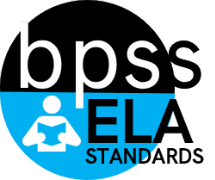ELA-12.W.02
|
12th Grade ELA Targeted Standards
[W] Writing Strand
Cluster: Text Types and Purposes
ELA-12.W.02 Write informative/explanatory texts to examine and convey complex ideas, concepts, and information clearly and accurately through the effective selection, organization, and analysis of content for a variety of purposes, audiences, and contexts.
a. Introduce a topic and establish a clear focus, purpose, and thesis statement to engage and orient the reader.
b. Organize complex ideas, concepts, and information so that each new element builds on that which precedes it to create a unified whole; include formatting (e.g., headings), graphics (e.g., figures, tables), and multimedia when useful to aid comprehension.
c. Develop the topic thoroughly by selecting the most significant and relevant facts, extended definitions, concrete details, quotations, or other information and examples appropriate for purpose and audience.
d. Use appropriate and varied transitions and syntax to link the major sections of the text, create cohesion, and clarify the relationships among complex ideas and concepts.
e. Use precise language, domain-specific vocabulary, and techniques such as metaphor, simile, and analogy to manage the complexity of the topic.
f. Establish and maintain an appropriate style and tone suitable for the norms and conventions of the discipline in which they are writing.
g. Provide a conclusion that follows from and supports the information or explanation presented (e.g., articulating implications or the significance of the topic).
h. Incorporate elements of narrative and argument writing into informative/explanatory writing when appropriate for purpose, audience, and context.
|
Student Learning Targets:
Knowledge Targets
- I can identify various techniques that authors use to manage the topic complexity.
- I can differentiate between significant supporting details and ineffective evidence.
Reasoning Targets
- I can support my main topic using sufficient and relevant evidence.
- I can elaborate on my ideas through descriptive and precise language and appropriate vocabulary.
- I can organize an informative text through the use of a precise introduction, well developed body paragraphs (including headings, figures, and tables if needed), and a conclusion that supports the information presented.
Skills (Performance) Targets
- I can maintain a formal style and objective tone by using academic and domain-specific vocabulary appropriate for the specific purpose and audience.
- I can use varied words, phrases, and clauses to creative effective transitions and cohesion.
- I can create a paper that presents a unified idea by introducing a topic; organizing complex ideas, concepts, and information so that each new element builds on that which precedes it to create a unified whole; including formatting (e.g., headings), graphics (e.g., figures, tables), and multimedia when useful to aiding comprehension.
- I can use appropriate and varied transitions and syntax to link the major sections of the text, create cohesion, and clarify the relationships among complex ideas and concepts.
- I can follow the conventions of standard English.
- I can provide a concluding statement or section that follows from and supports the information or explanation presented (e.g., articulating implications or the significance of the topic).
Product Targets
- I can write an informative/explanatory paper incorporating the knowledge, reasoning, and skills targets listed above.
Proficiency Scale
| Measurement of Progress |
ELA W11-12.2 Write informative/explanatory texts to examine and convey complex ideas, concepts, and information clearly and accurately through the effective selection, organization, and analysis of content for a variety of purposes, audiences, and contexts. |
Sample Activity
|
| Advanced |
In addition to expectations of proficiency, the student demonstrates in-depth inferences and applications regarding more complex material that go beyond end of instruction expectations. |
- |
| Proficient |
The student demonstrates no major errors or omissions regarding any of the information and processes that were end of instruction expectations.
- Introduce a topic and establish a clear focus, purpose, and thesis statement to engage and orient the reader.
- Organize complex ideas, concepts, and information so that each new element builds on that which precedes it to create a unified whole; include formatting (e.g., headings), graphics (e.g., figures, tables), and multimedia when useful to aid comprehension.
- Develop the topic thoroughly by selecting the most significant and relevant facts, extended definitions, concrete details, quotations, or other information and examples appropriate for purpose and audience.
- Use appropriate and varied transitions and syntax to link the major sections of the text, create cohesion, and clarify the relationships among complex ideas and concepts.
- Use precise language, domain-specific vocabulary, and techniques such as metaphor, simile, and analogy to manage the complexity of the topic.
- Establish and maintain an appropriate style and tone suitable for the norms and conventions of the discipline in which they are writing.
- Provide a conclusion that follows from and supports the information or explanation presented (e.g., articulating implications or the significance of the topic). h. Incorporate elements of narrative and argument writing into informative/explanatory writing when appropriate for purpose, audience, and context.
|
- |
| Progressing |
The student demonstrates no major errors or omissions regarding the simpler details and processes but exhibits major errors or omissions regarding the more complex ideas and processes. |
- |
| Novice |
With help, the student demonstrates a partial understanding of some of the simpler details and processes and some of the more complex ideas and processes. |
- |
Resources
Websites
Vocabulary |

